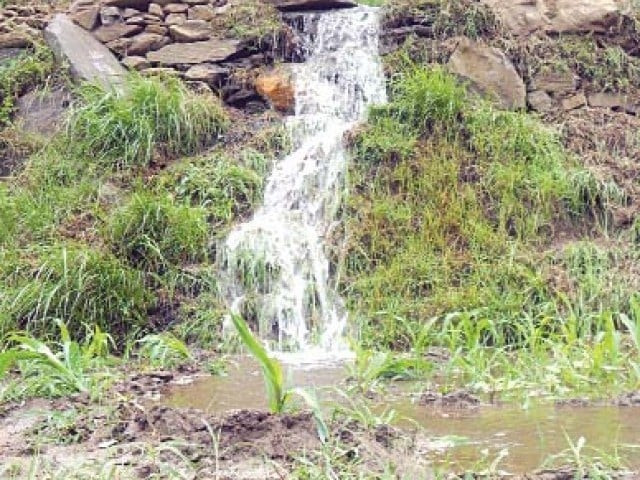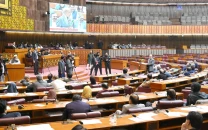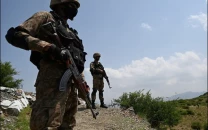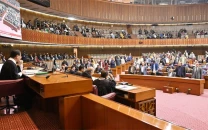Sindh, Punjab to face 18% water shortage in Rabi
Irsa advisory committee anticipated 3% more water during Oct-March period

Sindh and Punjab would face 18% basin-wise water shortage during the upcoming Rabi season, according to the data approve by the Advisory Committee of the Indus River System Authority (Irsa) on Thursday.
The Advisory Committee, which met here with Zahid Hussain Junejo in the chair, gave approval to the Rabi 2022-23 Anticipated Water Availability Criteria from October 1, 2022 to March 31, 2023.
The committee discussed the recommendations of Irsa Technical Committee (ITC) and approved the anticipated 21.67 million acre foot (MAF) water availability at the four rim stations for Rabi 2022-23.
The anticipated water availability for the upcoming season is about 3% more than the availability in the previous year but 4% less than the 10-year average. The committee anticipated 8.6% water losses in the Indus zone.
However, officials from the Punjab Irrigation Department showed reservations on the adopted percentages for the losses in Indus Zone and advocated 0% losses, based on matching year statistics.
According to the data, the likely availability of water at the canal heads was 30.19 MAF – about 10% higher than last year’s availability of 27.43 MAF and 2% higher than 10-year average of 29.68 MAF.
The director general of the Meteorological Department informed the committee that below-normal rains were expected across the basin for the next three months but moderate to above-normal rains were expected in areas in southeast Sindh, adjoining India’s Rajasthan state.
Meanwhile, the committee approved Balochistan’s request for 0.149 MAF additional water for Kachhi Canal as on-time arrangement, in the wake of damage to the agriculture in the province because of the catastrophic rains during late Kharif season.
The committee also approved the request from the Water and Power Development Authority (Wapda) for the Chashma Barrage closure from January 1 to 15 2023. However, the dates would be synchronised with closure schedule of the Guddu and Sukkur barrages.
During the closure, Chashma reservoir would be constrained between 638.15 feet to 640.00 feet levels with outflow restrictions between 15,000 to 30,000 cusecs, the committee was informed by the Wapda officials.
Earlier, the committee reviewed the Kharif 2022 system operation and observed that the actual rim-station inflows of 91.47 MAF till September 29 remained 14% less than the forecast volume of 106.51 MAF and 9% less than the 10-year average of 100.42 MAF.
The first half of the Kharif season – April, May and June – were the driest months, while the Later half – July, August September – were the wettest on record. It was noted that the canal withdrawals by the provincial were 41% short of their shares.
The committee was informed that the imbalance in provincial withdrawals was because of less utilisation, closure of canals because of flooding in the rivers. The actual system losses were estimated at 3.58 MAF, compared to the anticipated losses of 14.43 MAF.
Downstream Kotri releases remained 38.09 MAF due to catastrophic rains in the Indus Basin, especially the lower catchments. As a result of flooding of the Indus Main Stem, 19.93 MAF of gains occurred, the committee heard.
The committee unanimously approved the Tarbela Tunnel 5 closure for 33 months from September 2022 to May 2025. The participants of the meeting expressed deep sorrow over the massive loss of life and property in the calamitous rains during the late-Kharif season.



















COMMENTS
Comments are moderated and generally will be posted if they are on-topic and not abusive.
For more information, please see our Comments FAQ